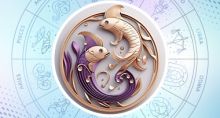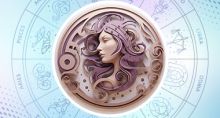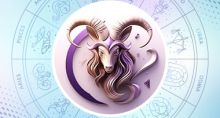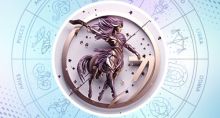9 Rituals Associated with Durga Pooja
Durga Pooja is the biggest religious festival of India’s Bengali community, celebrated every year in the month of Ashwin (September-October). It is a festival in celebration of Divine Mother’s homecoming. Goddess Durga is the embodiment of power, energy, truth and purity. She represents infinite power of the Universe that preserves moral order and righteousness. Celebration of her homecoming begins days before she finally arrives in her parents’ house (the mortal world) from the abode of her spouse, Lord Shiva in Kailash. Extensive rituals mark the celebration of Durga Puja festival.
Chokkhu Daan
Mahalaya sets the ambience for Durga Pooja. It is the last day of Pitri Paksha (fortnight of the forefathers) followed by Devi Paksha (the bright fortnight of the Goddess). Sculptors, who have been working for days carving and chiseling the statue of Durga, carry out their final touch of drawing the eyes of the Mother on this day. This auspicious ritual is called Chokkhu Daan. It marks the beginning of Durga’s journey to visit the mortal world.
Kalaparambha
On Maha Shasthi day (6th waxing Moon) the Divine Mother is welcomed with jubilation and fanfare amidst the rhythmic beatings of Dhak (a membranophone instrument). One of the main rituals on this day is the unveiling of the face of the Goddess, called Kalaparambha. The priest takes the Sankalpa or sacramental intention to conduct all the rituals in a proper manner.
Bodhon
Bodhon means awakening. Durga Pooja during the month of Ashwin is called Akal Bodhon or untimely awakening of the Divine Mother. Lord Rama had to awaken the Goddess at an uncustomary time to seek her blessings to win the battle against demon king Ravana. In this ritual a copper vessel filled with water is installed at the base of a bilva tree and prayers are offered to awaken the Mother Goddess.
Kola Bou Snan:
On Maha Saptami day a banana tree is taken to river Ganges and given a ceremonial bath. Thereafter, it is draped in a white saree with red border. Paste of vermillion is applied on the leaves and the tree is then kept next to Lord Ganesha, as his bride. Pooja for Maha Saptami begins thereafter.
Nabapatrika
It is a ritual of worshipping nine types of plants, symbolic of nine forms of Goddess herself. The nine plants – Banana, Turmeric, Wood Apple, Pomegranate, Ashoka, Colacassia, Rice and Jayanti are worshipped along with Kola Bou (wife of Ganesha) on the Maha Saptami day.
Kumari Puja
Worship of young girls, who have not yet reached their puberty represent the Goddess in the ritual of Kumari Puja. It is observed on the Maha Ashtami day. The ritual is primarily observed in Ramakrishna Mission, at Belur Math near Kolkata after Swami Vivekananda initiated the custom in 1901.
Sandhi puja
The time window comprising the last 24 minutes of Ashtami tithi and the first 24 minutes of Navami tithi is the sacred time for Sandhi puja. This length of time is called Sandhikhan. Symbolically, during this time of dusk Goddess Durga slayed demons named Chonda and Munda. The Goddess is worshiped this time as Chamunda. It is the most auspicious time of the Durga Puja festival.
Darpan Visarjan
This is a ritual when the priest symbolically immerses the idol of the Goddess by seeing her reflection in a bowl of water. Married women are then allowed to perform the ritual of “ boron” to the Goddess, a kind of send-off by applying vermillion on the parting of the hair on Goddess’s forehead, her feet and then take her blessings. They place sweets on her lips, wishing to see her return again the next year. The actual immersion takes place after Darpan Visarjan.
Sindoor Khela
After boron, the playful ritual of Sindoor Khela begins. It is the final ritual carried out before the immersion of the idol. Married women apply vermillion on each other’s forehead and bangles. They share sweets and pray for each other’s happiness in married life. The hugely popular celebration of the Divine Mother’s homecoming culminates with this ritual.

Leave a Reply
Xandy
That's a brilliant answer to an inetitserng question
July 22, 2018








 Durga Virtual Pooja
Durga Virtual Pooja  Durga Pooja & Mantra
Durga Pooja & Mantra  Durga Pooja & Mantra
Durga Pooja & Mantra 











